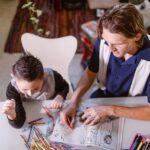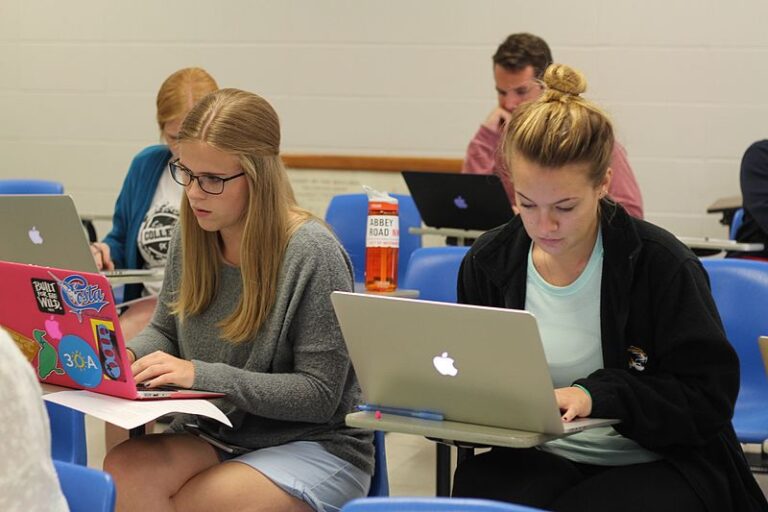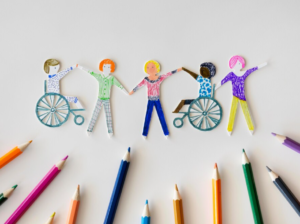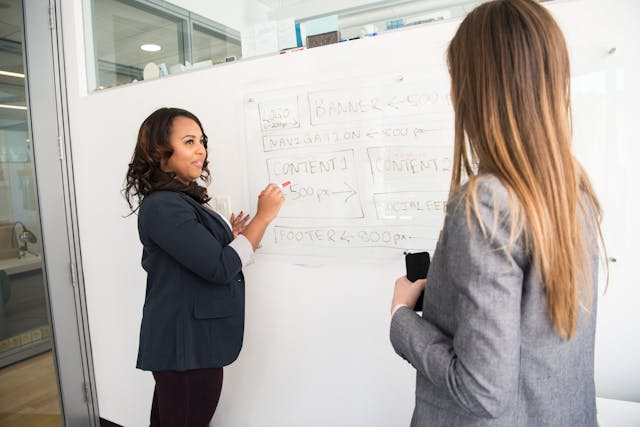In this comprehensive guide, we will delve into the essential inclusive practices that early childhood programs should master to create a welcoming and supportive environment for all learners. Our focus is on fostering diversity and inclusivity to ensure the holistic development of young children. We will present a thorough examination of 12 evidence-based inclusive practices that have shown remarkable efficacy in nurturing young minds within inclusive programs.
Modifications for Space, Materials, and Equipment
Promoting Inclusivity and Independence in Classroom Environments
Inclusive access is provided to the physical environment, materials, and equipment for both children with and without disabilities. Adult scaffolding strategies are employed to assist children in meaningful material engagement as needed. The teacher and assistants initially arrange classroom spaces and materials to be accessible to all children, but they also adapt and reorganize them dynamically to foster independence and promote social interactions intentionally.
Illustrative Scenario:
In a preschool classroom, Educator Sarah observed Alex, a 4-year-old child with cerebral palsy, using a walker to navigate from the block corner to the art area during a free play session. Recognizing an opportunity to promote Alex’s independence and foster inclusivity, Sarah took intentional steps.
Educator Sarah engaged Alex’s classmates who were playing at the block corner, encouraging them to clear the path leading to the corner by temporarily relocating some toys. This considerate adjustment not only facilitated Alex’s autonomous movement but also nurtured a sense of camaraderie among the children. By creating a supportive environment where Alex could interact with his peers more easily, Educator Sarah exemplified the inclusive ethos at the heart of the classroom.
Social Development through Adult Engagement in Peer Interactions
Within the educational space, youngsters find opportunities to partake in events and habits with their fellow classmates. Grown-ups thoughtfully craft and implement routine communal interactions and educational ventures. A harmonious balance exists between adult direction and fostering youngsters’ innate societal exchanges. Grown-ups are hands-on in mediating disputes among youngsters and employ supportive techniques to cultivate beneficial, reciprocal, and enduring bonds between them.
Illustrative Scenario:
Meet Emily, a 3-year-old girl with nonverbal communication and developmental delays. One morning, Educator Sarah arranged a circle time activity to support Emily’s participation. She asked her classmate, Jack, to demonstrate the hand movements of a song that Emily enjoys performing with her peers. Observing Jack’s hand movements provided Emily with a valuable visual cue, enabling her to imitate, learn, and eventually perform the song’s movements independently. This thoughtful intervention by Educator Sarah illustrates the power of peer modeling in promoting inclusive social interactions and skill development within the classroom.
Child-Centered Learning and Play with Adult Guidance
Grown-ups display enthusiasm and eagerness when participating with youngsters in fun pursuits. During unstructured times, kids are given broad freedom to select their games, companions, and favorite themes. Youngsters frequently receive encouragement to decide how they spend their leisure. By monitoring kids’ play involvement, adults consistently offer tailored guidance using a mix of methods, such as signals, both spoken and silent, exemplifying behaviors, offering feedback, posing inquiries, and integrating fellow youngsters.
Illustrative Scenario:
For instance, imagine a scenario where Educator Alex engages with Olivia, a 4-year-old who recently joined the classroom and is eager to explore her interests. Using a visual activity organizer in the role-play area, Educator Alex assists Olivia in acting out the steps involved in preparing a meal for her friends. This hands-on support not only encourages Olivia’s creativity but also fosters a sense of belonging and inclusion in the classroom.
Promoting Conflict Resolution Skills
In the context of nurturing conflict resolution skills among children, educators play a vital role in creating a supportive and understanding environment. This approach involves various elements that aim to establish positive social behavior and effectively address conflicts when they arise.
To set the stage for conflict resolution, educators establish clear rules and behavioral expectations that are consistently communicated to children. This proactive measure fosters a sense of responsibility for their actions and encourages positive social behavior, ultimately preventing conflicts from escalating.
When children encounter difficulties in resolving their differences independently, educators step in to facilitate resolution. They engage with the children involved in the conflict, actively listening to their perspectives and validating their feelings. This approach ensures that every child feels heard and understood.
Educators shift their focus towards helping children explore more positive ways of negotiating their differences. Instead of promoting competition or aggression, they encourage collaborative problem-solving and empathy-building exercises.
Individualized strategies are employed to support children in resolving conflicts with their peers and generating mutually acceptable solutions. These strategies are tailored to each child’s unique needs and challenges.
Illustrative Scenario:
For instance, consider a scenario where Educator Sarah observed a conflict between two children, Alex and Emma, over a new toy on the playground. Recognizing that one of the children, Alex, had difficulty expressing themselves verbally, Sarah facilitated the resolution process. She invited both children to explore alternative solutions using visual aids that depicted possible options. With Sarah’s guidance, Alex and Emma decided to take turns using the new toy, guided by an alarm clock that indicated when it was time to pass it to the other. This collaborative solution not only resolved the immediate conflict but also imparted valuable conflict resolution skills to both children.
Fostering Inclusive Classroom Communities
In the pursuit of an inclusive and supportive classroom environment, educators collaborate to create a sense of belonging for all children, embracing their diverse backgrounds and abilities. This endeavor involves several key elements aimed at nurturing a sense of community and promoting acceptance of individual differences.
Educators actively contribute to the development of a classroom community where every child feels a sense of belonging, irrespective of their unique characteristics. They strive to foster an environment that celebrates diversity and encourages mutual respect among students.
One method educators employ is planning activities and providing opportunities that help children understand and accept individual differences. These experiences are designed to promote empathy, inclusion, and appreciation for the uniqueness of each child.
Within the classroom, opportunities are structured to enable children to assume equal roles and responsibilities. This approach ensures that every child has a chance to actively participate and contribute to the classroom’s collaborative efforts, reinforcing their sense of belonging.
In instances where conflicts or hurtful behaviors arise, educators intervene promptly to prevent bullying or persistent teasing among children. They create a safe space where children can express their concerns and feelings while reinforcing the importance of respectful communication and empathy.
Moreover, educators utilize positive and inclusive strategies when responding to children’s individual differences. They engage in open dialogues, provide explanations, and offer demonstrations to help children understand and appreciate the uniqueness of their peers.
Illustrative Scenario:
For example, let’s consider a situation where Educator Emily responded to a child’s inquiry about why another child was using a different type of spoon during snack time. Emily explained that children can use various spoons as they grow and explore different foods. She presented a variety of spoon sizes available for their use and demonstrated how some might be more suitable for certain children due to their unique needs. This inclusive approach not only addressed the child’s curiosity but also promoted understanding and acceptance of individual differences within the classroom community.
Cultivating Positive Adult-Child Relationships
Educators aim to build positive relationships with children by creating a nurturing environment filled with meaningful interactions. These interactions are characterized by responsiveness, empathy, and support for children’s emotional and developmental needs.
Throughout the day, educators actively seek opportunities for positive, reciprocal, and continuous social interactions that not only facilitate learning but also make children feel valued and cherished. They convey enjoyment and enthusiasm during these interactions to reinforce children’s sense of belonging.
Responsiveness is a key priority as educators remain attuned to children’s interests and emotional needs. They engage in ways that validate feelings, fostering trust and security. This ensures that children have a supportive presence when facing challenges or needing emotional guidance.
Visual supports and classroom resources complement verbal interactions to enhance children’s emotional development and well-being. These tools promote self-awareness and emotional resilience, helping children navigate their emotions effectively.
Illustrative Scenario:
For example, consider a scenario where Educator Sarah noticed that 4-year-old Olivia seemed hesitant to play outside due to a thunderstorm earlier in the morning. Sarah responded by reading a picture book with Olivia about thunderstorms, using this shared activity to address Olivia’s concerns. Following the book reading, Sarah modeled various strategies Olivia could employ if she ever felt uncomfortable outside on the playground during such weather. This shared reading experience and the subsequent conversation not only alleviated Olivia’s anxieties but also encouraged her to join her peers on the playground with newfound confidence.

Enhancing Communication Support
Establishing a setting that bolsters effective interaction between kids and grown-ups demands key measures that emphasize receptivity and inclusiveness. These measures comprise a spectrum of tactics enabling children to articulate and partake deeply in educational endeavors.
Primarily, adults focus intently on communications initiated by kids. By actively heeding and reacting to kids’ words, they nurture a bond of shared comprehension.
Moreover, grown-ups act ahead of time to enhance dialogue with children, using a myriad of supportive tactics tailored to varying communicative needs. These could range from alternate communication methods, gestures, to tools like AAC devices.
To boost this dialogue, instructors utilize pictorial aids, literature, and teaching assets. These instruments act as catalysts, improving kids’ grasp and articulation of thoughts and emotions.
Significantly, adults deliberately weave in diverse communication methods, fortifying children’s capability to convey thoughts and mingle with classmates efficiently. This all-embracing tactic ensures every child can participate and cooperate, regardless of their communicative prowess.
Illustrative Scenario:
For instance, consider a scenario where Educator Sarah guided Martha, the designated helper of the day, on how to assist Andy, a child with communication difficulties, in choosing a snack. Sarah demonstrated how to use picture symbols depicting the available snacks. As Martha went around the table, verbally asking each child to make a snack choice between two options, she also presented two picture cards to help Andy make his selection. This approach not only supported Andy’s ability to communicate his preference but also encouraged his active participation in the snack time activity, fostering inclusivity within the classroom.
Enhancing Group Activities through Adaptation
Promoting inclusive and interactive group tasks in an academic environment requires a diverse methodology that emphasizes involvement and addresses unique requirements. This methodology integrates numerous tactics and methods, ensuring every child can interact and connect with their classmates.
Primarily, children are presented with avenues to engage in both orchestrated large-group and intimate-group tasks. These endeavors are curated to boost teamwork, unity, and collective learning experiences.
Grown-ups hold a central position in fortifying children’s involvement by integrating specific techniques and tailoring tasks to cater to unique requisites. These adjustments could range from altering resources, giving extra assistance, or suggesting different routes to accomplish challenges, ensuring comprehensive participation.
Moreover, grown-ups actively strategize and supervise these integrations and tweaks, meeting the varied necessities of the kids. They stay attuned to the dynamic needs of the ensemble, fine-tuning tasks to spur the continued involvement of every participant.
Illustrative Scenario:
For instance, consider a scenario where Educator Sarah organized a small-group art activity centered around painting leaves collected from outdoors. During this activity, Sarah provided hand-over-hand assistance to Louisa, a child with fine motor coordination difficulties, allowing her to finger-paint her leaves effectively. In the latter part of the activity, which involved cutting paper to create different shapes, Louisa worked alongside her peers on one of her individualized goals related to shape sorting. This approach not only ensured Louisa’s active participation but also promoted a sense of inclusion and shared learning experiences within the group.
Seamless Transitions in Classroom Activities
Creating smooth transitions between activities in an educational setting involves a collaborative and adaptable approach among adults, with a focus on catering to individual needs. This approach encompasses various strategies and practices aimed at ensuring that transitions are well-coordinated and inclusive.
To facilitate seamless transitions, adults share responsibilities and flexibly adjust their roles as needed to prepare for daily activities. This cooperative effort ensures that transitions occur with minimal disruptions and provide a conducive learning environment.
Adults also engage in collaborative planning to prepare activities and supports for the entire group. This proactive approach ensures that transitions are thoughtfully organized and that children are well-prepared for what comes next.
Furthermore, adults recognize that some children may require specific, individualized strategies to navigate transitions effectively. These strategies may include the use of visual supports, schedules, or other tools that cater to the unique needs of each child.
Illustrative Scenario:
For instance, let’s consider a scenario where Educator Emily uses a soft musical tune to signal the end of transitions for the whole group. However, Sam requires additional support to transition between activities. In response to Sam’s needs, Kelly and her co-teacher collaborated to create a visual picture schedule that they go through with Sam. Sam finds this visual schedule very helpful, as it allows him to look at the symbols representing upcoming activities before the current routine concludes. This personalized approach not only assists Sam in navigating transitions but also promotes inclusivity within the classroom.
Nurturing Growth through Feedback
Fostering effective feedback in education involves a supportive approach that encourages children’s efforts and enhances their learning experiences. This includes various strategies aimed at promoting positive behaviors, engagement, and skill development.
- Adults provide sensitive, positive feedback to acknowledge children’s efforts, behaviors, and learning, both verbally and nonverbally. This creates an environment where children feel valued and recognized.
- Different types of feedback, such as corrective feedback for improvement and positive reinforcement for desirable behaviors, are employed to support essential goals like fostering positive behavior and promoting learning.
- Additionally, feedback emphasizes children’s efforts and the process of tasks rather than solely focusing on end products, encouraging them to embrace challenges and see mistakes as opportunities for growth.
Illustrative Scenario:
For instance, consider a scenario where Educator Sarah observed Alex, a child with a developmental delay, diligently working on solving a number puzzle during free playtime. Sarah engaged with Alex by asking him about his problem-solving strategy. In response to Alex’s explanation, Sarah provided positive feedback, stating, “I can see you’re working very hard, and your strategy seems very helpful.” Sarah further encouraged Alex to share his strategy with his peers during circle time, promoting a sense of accomplishment and fostering a supportive learning environment.

Collaborative Partnerships between Families and Professionals
Fostering strong family-professional partnerships in education prioritizes open communication, active engagement, and mutual respect. These strategies ensure families’ active involvement and voice in their children’s education.
- Daily procedures promote bidirectional communication between families and professionals, facilitating meaningful exchanges about children’s individualized education programs and progress.
- Staff members are not only encouraged but also motivated to engage in meetings with families, fostering discussions on children’s development and strategies to meet their unique needs.
- Families are given opportunities to contribute their perspectives and concerns, shaping the planning and implementation of educational programs to effectively meet children’s needs.
- Moreover, families are invited to provide feedback, contributing valuable insights that drive continuous program improvement.
Illustrative Scenario:
For instance, let’s consider a scenario where Educator Emily facilitates communication between families and teachers through multiple channels. Each child has a communication book in which families and teachers can exchange daily messages, including private notes. Additionally, Emily uses email for daily communication with families. At the end of each day, classroom staff post messages about the day’s activities and children’s experiences on a whiteboard outside the classroom to share with families. Emily’s program also supports staff in attending intervention planning meetings with service providers and families, further enhancing collaboration.
To exchange information on children’s progress with families, the program actively encourages families to participate regularly in progress meetings. Reports on children’s progress are prepared to be parent-friendly and sensitive to the cultural and linguistic diversity of families. The program also utilizes a system for identifying family priorities, concerns, and resources to assist in meeting children’s needs effectively.
Assessing Children’s Learning Progress
In an educational setting, assessing and monitoring children’s progress is a holistic process that employs diverse assessment methods. This includes research-based formative assessments, detailed observations, behavior checklists, and teacher-made tools. These assessments provide a comprehensive view of each child’s development, allowing for tailored interventions based on their individual needs.
Individualized intervention plans are created based on each child’s identified needs, specifying how to seamlessly integrate support into classroom activities. All staff members have access to assessments, intervention plans, and reports from specialized therapists, ensuring coordinated efforts in the child’s education.
This approach extends beyond the classroom, addressing children’s needs in their home and community settings. Progress monitoring data informs ongoing adjustments to interventions and instruction, ensuring each child receives the necessary support.
Illustrative Scenario:
For instance, consider a scenario where Educator Sarah was diligently keeping a running record of Liam’s participation during a math activity aimed at enhancing his problem-solving skills. Sarah noted that Liam thrived when provided with concrete manipulatives to visualize math problems. However, she also observed that Liam benefited from occasional guidance to connect mathematical concepts. These observations helped tailor interventions to suit Liam’s unique learning style, ensuring his continued progress.
Conclusion
In conclusion, creating inclusive preschool environments through best practices is crucial for fostering a learning environment that values diversity and ensures equal opportunities for all children. By prioritizing accessibility, social engagement, and tailored support, educators can provide a rich and diverse learning experience that promotes empathy and acceptance from an early age. These practices prepare children for academic success and a more inclusive future.

















+ There are no comments
Add yours